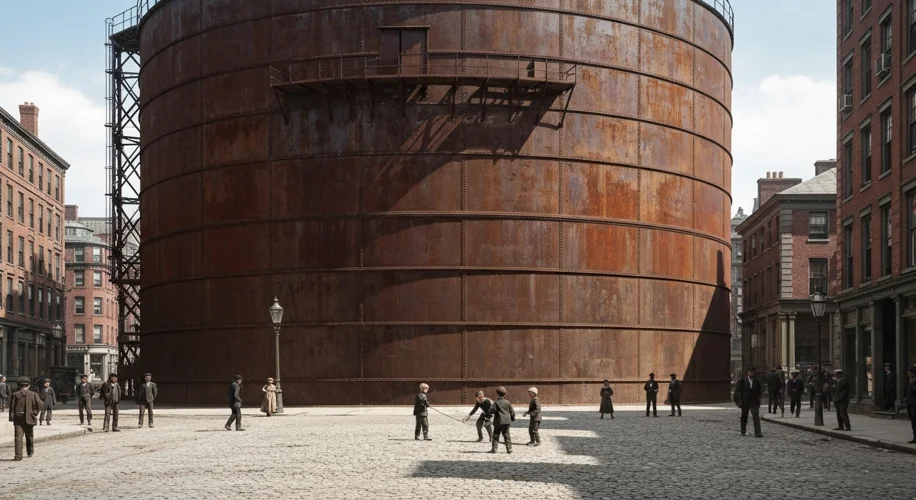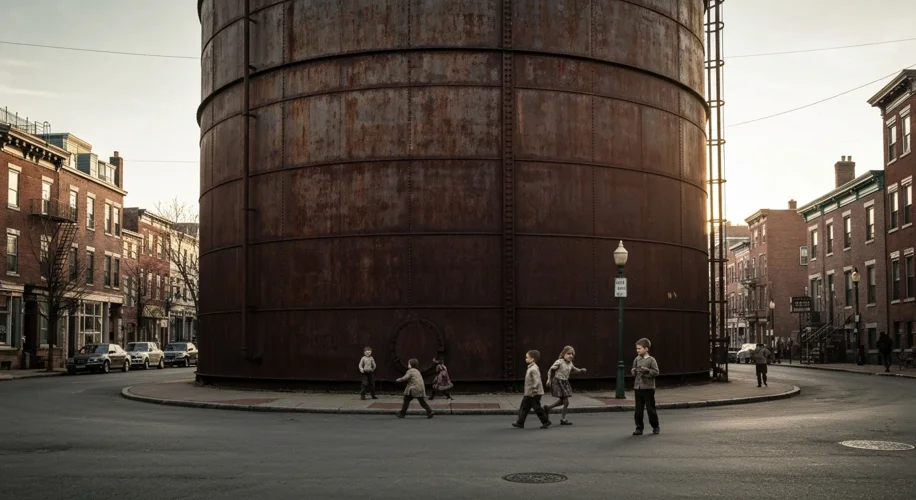The air in Boston’s North End on January 15, 1919, was thick with the usual winter chill, but beneath the surface of normalcy, a disaster was brewing. It wasn’t the rumble of impending war, nor the whisper of a new plague, but something far more insidious and sticky: a colossal tank of molasses, poised to unleash its sweet, deadly fury.
For years, the Purity Distilling Company’s immense storage tank, a towering behemoth of riveted steel, had stood sentinel over the neighborhood. It held a staggering 2.3 million gallons of thick, dark molasses, destined to be fermented into industrial alcohol, a vital component in munitions manufacturing during World War I. The tank, however, was a ticking time bomb. Its construction was shoddy, its testing cursory, and its presence a constant source of unease for the local residents. Children would often dare each other to lick the sweet ooze that seeped from its rivets, oblivious to the precariousness of their sugary playground.

The fateful day arrived with an unseasonably warm temperature. The mercury had risen into the 40s Fahrenheit, thawing the city and, crucially, causing the molasses within the tank to expand. Around lunchtime, with a groaning, shrieking sound that some locals later described as eerily similar to machine-gun fire, the tank catastrophically failed. The rivets burst, the steel plates peeled back like a sardine can, and a tidal wave of molasses, estimated to be 25 feet high and moving at 35 miles per hour, surged through the streets.
The destruction was immediate and horrific. Buildings were flattened, horses were drowned, and people were swept off their feet, suffocated, or crushed by the immense force and weight of the sticky tide. The sweet scent of molasses quickly turned to the sickening smell of death. Rescuers, many of them local residents and sailors from a nearby training ship, waded through waist-deep goo, pulling out victims, some alive, some tragically not.

The aftermath was a scene of surreal devastation. The molasses coated everything, a dark, viscous shroud over the once-familiar streets. It seeped into homes, businesses, and even the elevated railway tracks. The cleanup operation was monumental, taking weeks, and involved thousands of people using salt water from fire hoses to wash away the sticky residue. The very color of the harbor turned a sickly brown.
In the end, 21 people lost their lives, and at least 150 were injured. The Great Molasses Flood, as it came to be known, was not just a tragic accident; it was a stark indictment of corporate negligence and a powerful reminder of the often-unseen dangers lurking beneath the surface of everyday life.
The Purity Distilling Company, a subsidiary of United States Industrial Alcohol, initially tried to blame anarchists for the explosion. However, a lengthy class-action lawsuit, one of the first of its kind in Massachusetts, ultimately found the company liable. The court’s decision, which came years later, highlighted the tank’s structural deficiencies and the company’s failure to heed numerous warnings. The disaster led to stricter building codes and more rigorous oversight of industrial structures across the city and, eventually, the nation.

Today, Bostonians can still sometimes catch a faint, sweet scent of molasses on warm days, a spectral reminder of that dreadful January afternoon. The Great Molasses Flood serves as a potent historical lesson, a sticky, dark tale of human error, corporate indifference, and the devastating consequences that can arise when safety is sacrificed for profit. It’s a story that, even a century later, continues to ooze into our consciousness, reminding us to look beyond the sweet surface and question what lies beneath.

